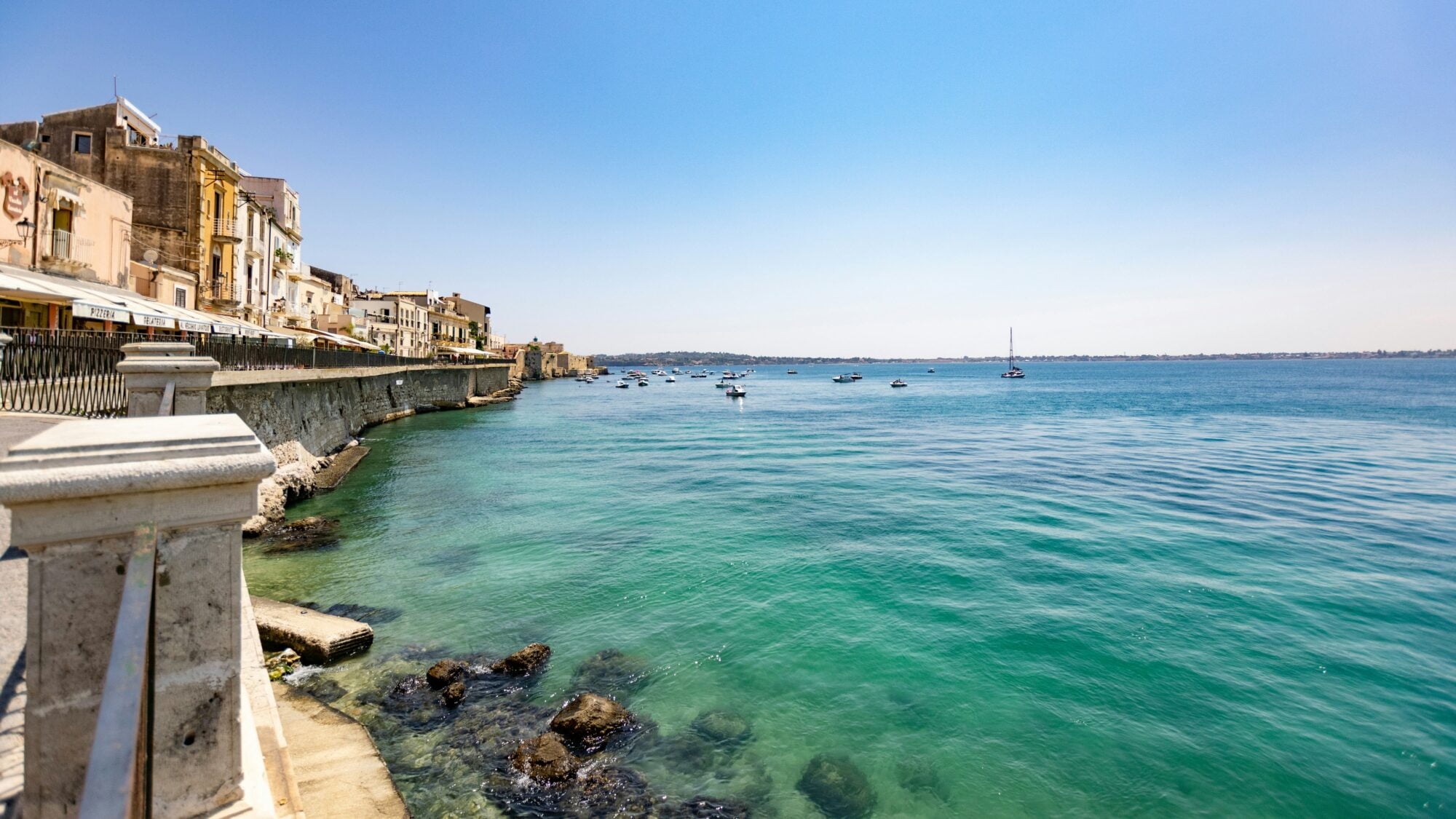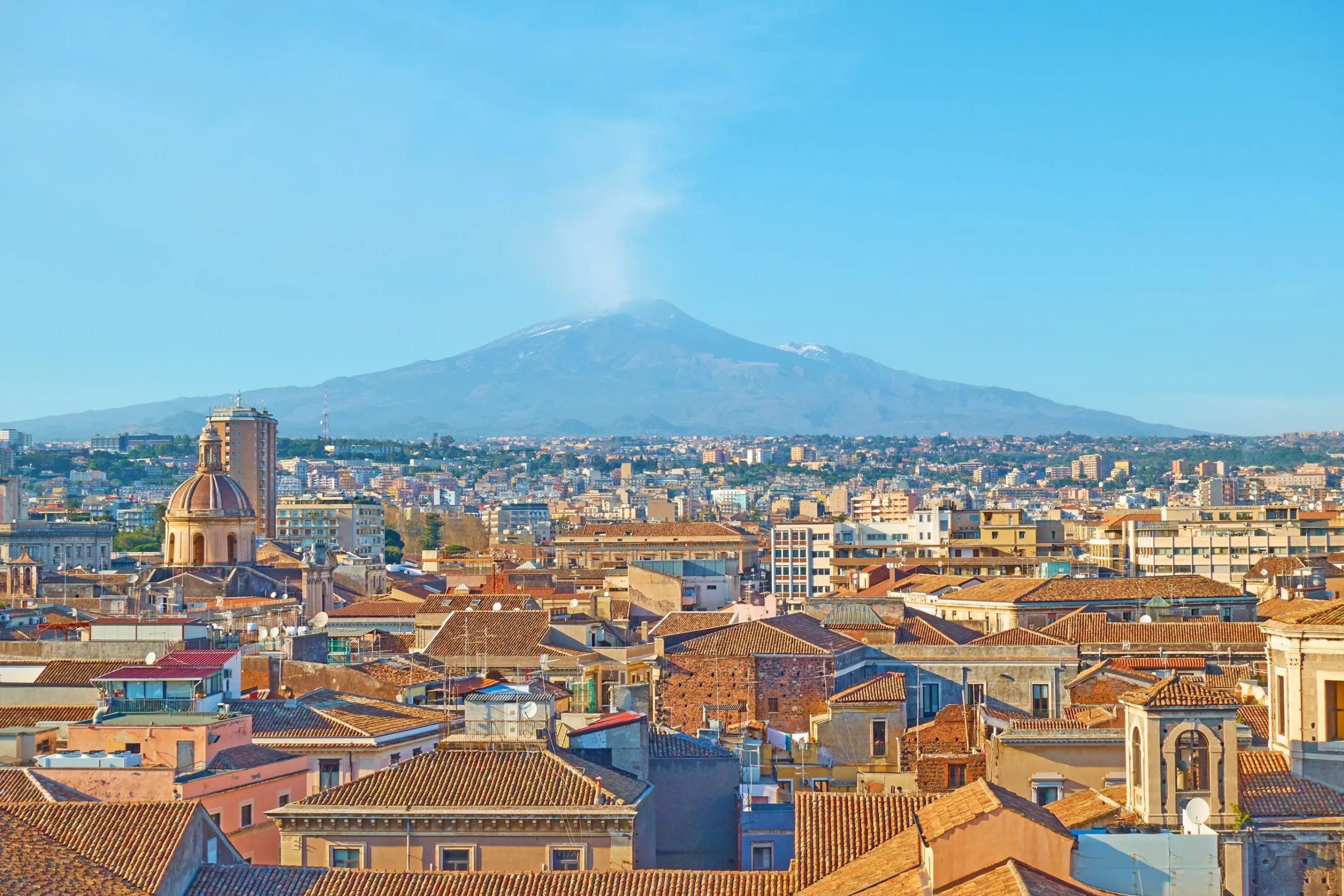While visiting Catania in Sicily, it’s only natural to make your next stop in Syracuse. This ancient town offers countless reasons to visit, including its important historical sites, stunning architecture, delicious food, and breathtaking scenery.
So let’s explore the best things to do in Syracuse in a day.
6. Lunch at Cod da Saretta, Merluzzo fritto
7. Take a stroll along the Ortigia seafront
Quick Facts
Syracuse is a historic city on the southeast coast of Sicily, known for its rich history, ancient ruins, and stunning architecture. Founded by Greek colonists from Corinth in 734 BC, Syracuse quickly grew into one of the most powerful cities in the ancient Greek world. As a major center of trade and learning, it became renowned for its cultural heritage and as the home of the famous mathematician Archimedes.
Conquered by the Romans in 212 BC, Syracuse later fell under Byzantine, Arab, and Norman rule, with each period leaving a lasting impact on its architecture and culture. Today, Syracuse is a UNESCO World Heritage Site, celebrated for its ancient ruins and Baroque buildings that reflect its diverse historical past and offer a variety of attractions for visitors.
Itinerary
We moved around in a rented car, which is the most convenient way to explore Sicily.
Upon arriving in Syracuse, we will head directly to Ortigia. It is the historic center of Syracuse, located on a small island just off the mainland of Sicily. If you are traveling by car, we recommend parking here for 1.50 € per hour.
We will spend the first half of the day in Ortigia, visiting the local street market, admiring the Syracuse Cathedral at Piazza Duomo, and exploring some notable landmarks on the island like Arethusa Spring and Maniace Castle. Finally, we’ll take a stroll along the Ortigia seafront to enjoy the beautiful scenery and have lunch at a seafood restaurant.
In the second half of the day, we will focus on the mainland of Syracuse, where we’ll visit notable historical sites such as the Neapolis Archaeological Park and the Catacombs of San Giovanni, and then finish the day with dinner.
1. Ortigia Street Market
Italian: Mercato di Ortigia
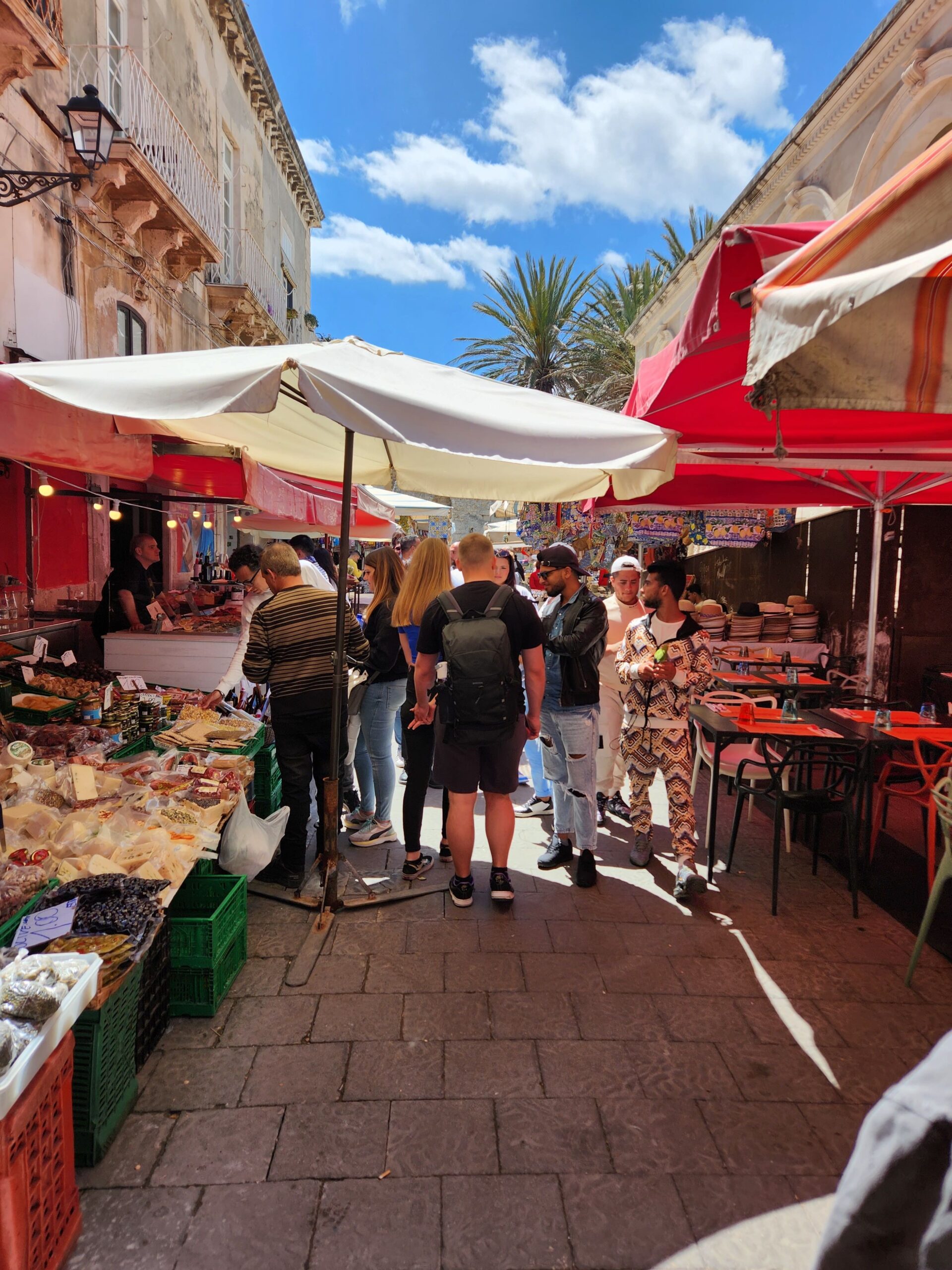
Our first stop in Ortigia is the street market and it is just 5 minutes walk from where we parked the car. It is a lively and colorful area located in the heart of Ortigia, the historic center of Syracuse. It’s one of the most vibrant spots in the city, offering visitors a chance to experience the local culture and daily life of Syracuse.
What to expect at the Ortigia Street Market? Here you’ll find a variety of Sicilian specialties, including sun-dried tomatoes, capers, olives, local cheeses, local sweets, and seafood. In addition to food, the market features local vendors selling handmade crafts, souvenirs, and traditional Sicilian products.
The market’s bustling atmosphere is a delight, filled with the sounds of vendors calling out their goods, the chatter of locals, and the vibrant colors of fresh produce. It’s a great place to immerse yourself in the local culture and observe daily life in Syracuse.
Many vendors offer tastings of their products, giving you the opportunity to sample Sicilian flavors before purchasing. Whether it’s a slice of pecorino cheese, a sip of local wine, or a piece of freshly baked bread, the market offers a culinary adventure.
Pro Tips for Visiting:
- Timing: The Ortigia Street Market typically opens in the morning at 7 AM and winds down by early afternoon at around 2 PM, so it’s best to visit early to experience it at its busiest and freshest.
- Cash: Most vendors prefer cash, so it’s a good idea to have some euros on hand.
- Engage with Locals: Don’t hesitate to chat with the vendors. Many are happy to share their knowledge about their products and the best ways to prepare them.
2. Temple of Apollo
Italian: Tempio di Apollo
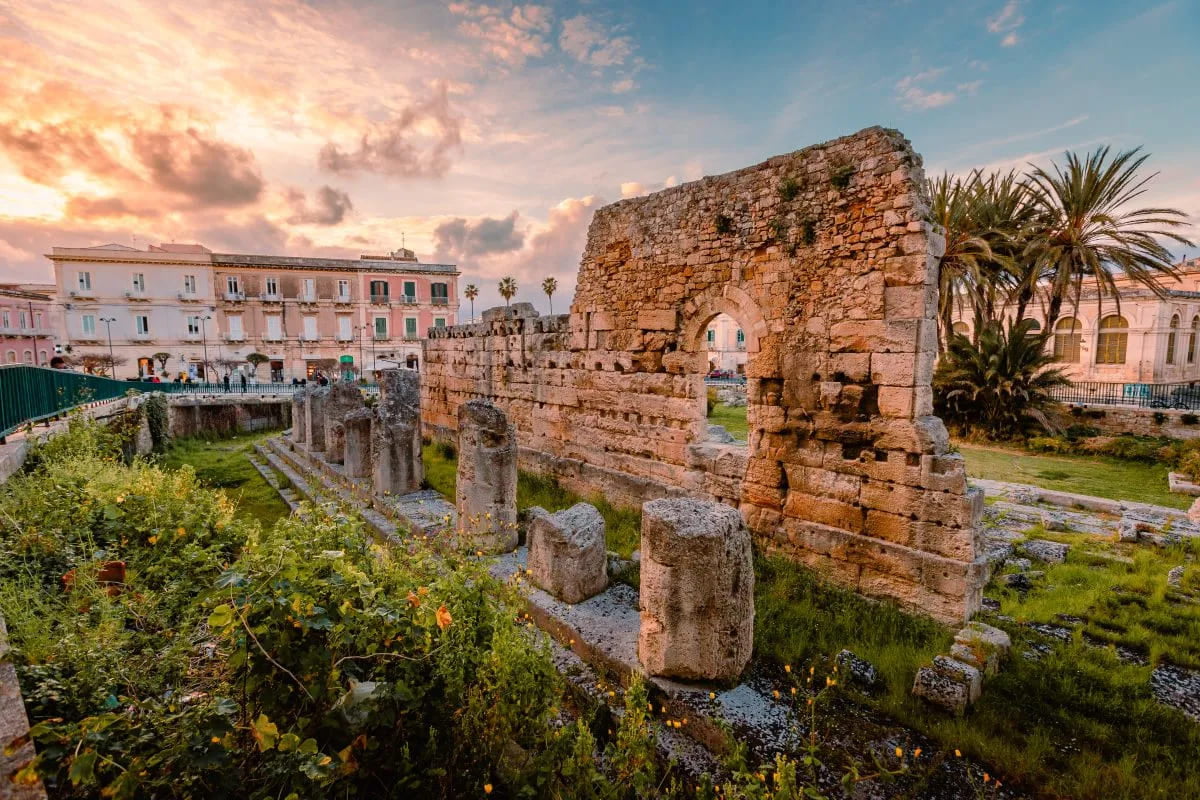
On the way to the Syracuse Cathedral, we can’t miss another notable landmark of Ortigia island: the Temple of Apollo. It is one of the most significant and ancient Greek temples in Sicily.
The Temple of Apollo dates back to the early 6th century BC, making it one of the oldest Doric temples in Sicily. Its construction reflects the early Greek presence in the region and Syracuse’s importance as a major Greek colony.
Over the centuries, the temple was repurposed multiple times: it was converted into a Byzantine church, then a mosque during the Arab period, and later a Norman church. These transformations have left their marks on the ruins, making it a site of layered history.
The Temple of Apollo is an open site under the sky and, therefore it is free to visit.
3. Syracuse Cathedral
Italian: Cattedrale metropolitana della Natività di Maria Santissima
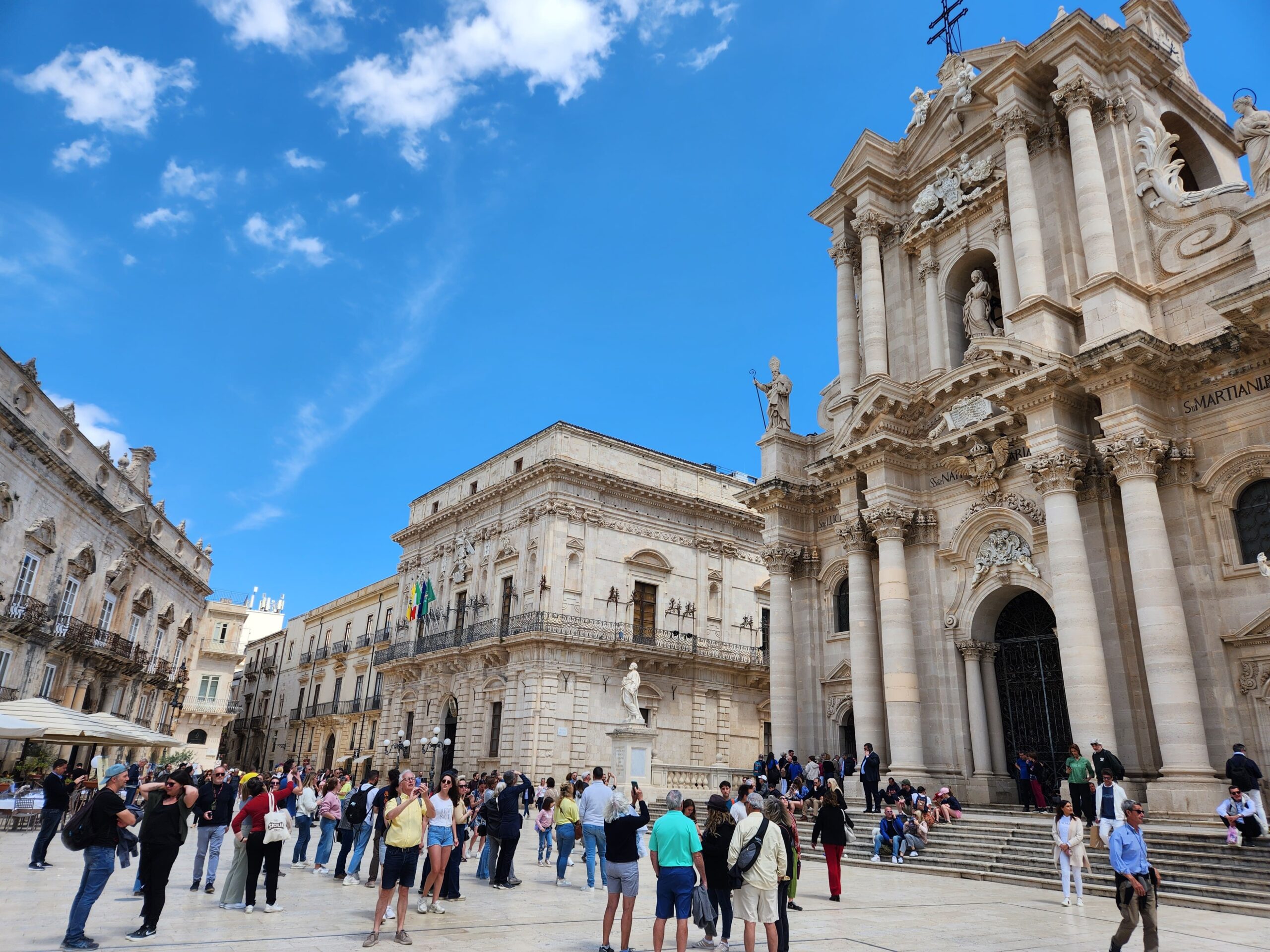
Just a few steps from the temple, we’ll reach Piazza del Duomo. This beautiful square is the focal point of Ortygia, surrounded by stunning Baroque architecture. The most notable building here is the Syracuse Cathedral. In my opinion, the Syracuse Cathedral is one of the most beautiful churches in Italy!
The cathedral is built on the site of a 5th-century BC Greek temple dedicated to Athena, constructed by the ancient Greek settlers of Syracuse. In the 7th century AD, the temple was converted into a Christian church. The walls of the Greek temple were incorporated into the cathedral’s structure, with the ancient Doric columns still visible today as part of the church’s interior walls. The current facade of the cathedral, designed by Andrea Palma in the 18th century, showcases the Baroque style with its ornate carvings, statues, and decorative elements. This striking facade contrasts with the more austere and ancient elements found within.
The Norman influence is also present in the cathedral, particularly in the pointed arches and wooden ceilings, which date back to the 12th century when the Normans ruled Sicily.
This monument of blended architectural styles and historical influences is an absolute must-visit landmark in Ortygia.
Opening Hours: 7:30 AM – 7 PM
Ticket Price: 2 €
4. Arethusa Spring
Italian: Fonte Aretusa
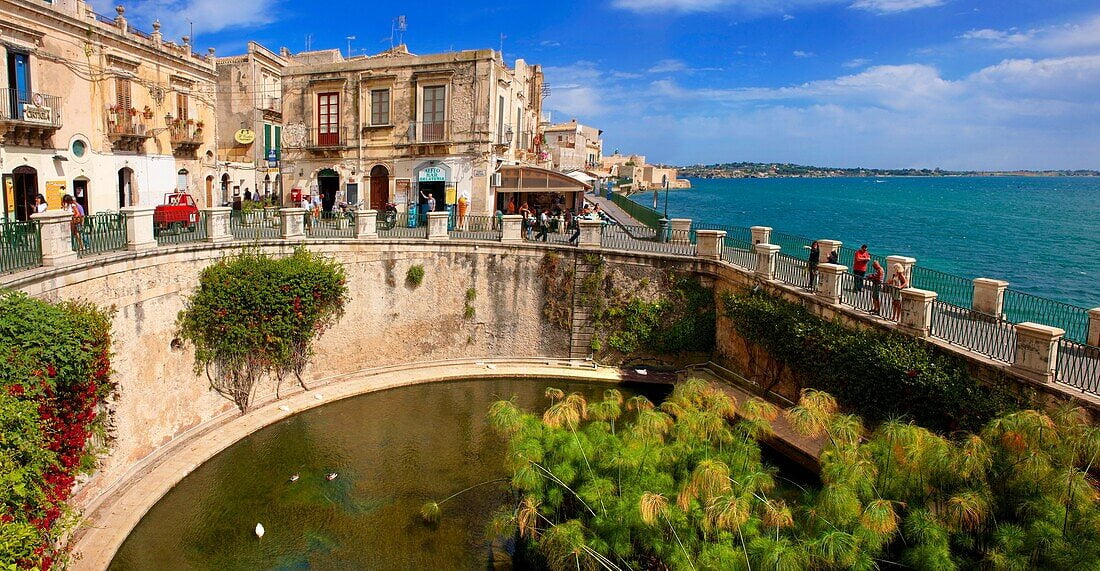
A 3-minute stroll from the Cathedral will take you to an important spot in Ortigia called Arethusa Spring. It is a picturesque freshwater spring located in the historic center of Syracuse. The spring is renowned for its natural beauty, with lush vegetation, including rare papyrus plants, and its mythological significance.
Named after Arethusa, a nymph from Greek mythology who was transformed into a spring by Artemis to escape the river god Alpheus, the site symbolizes eternal love and connects Syracuse with its ancient Greek heritage.
At Arethusa Spring, you can take a short break in a peaceful atmosphere and enjoy scenic views of the Ionian Sea.
Did you know? It is one of the few places in Europe where papyrus grows naturally.
5. Maniace Castle
Italian: Castello Maniace

Not far from the Arethusa Spring, you’ll find Maniace Castle, a historic fortress situated at the southern tip of the island. Named after the Byzantine general George Maniakes, who recaptured Syracuse from the Arabs in the 11th century, the castle stands as a remarkable example of medieval military architecture and a significant historical site.
Maniace Castle was constructed in the 13th century by Emperor Frederick II of the Holy Roman Empire to fortify the city against potential invasions. This fortress is an excellent example of Norman architecture in Sicily, known for its solid, square structure, thick walls, and defensive features that made it a formidable stronghold.
The castle served various military purposes well into the modern era, including being used as a barracks and military prison in the 19th century. Today, Maniace Castle is open to the public, offering visitors the chance to explore its extensive grounds, including the central courtyard.
While Maniace Castle might not be a must-visit spot for everyone, it does offer great panoramic views of the Ionian Sea from its walls, making it worth the 4 € entry fee.
Opening Hours: 8:30 AM to 6:45 PM. Double-check the opening hours here, as they can be affected by events hosted at the castle.
Ticket Price: 4 €
6. Lunch at Cod da Saretta, Merluzzo fritto
By this point, we’ve covered the most important must-see spots on Ortigia Island, and we’re pretty tired and hungry. When choosing a place to have lunch in Ortigia, the first thing that comes to mind is seafood. We found a small and cozy seafood restaurant on our way back to where we had left our car: Cod da Saretta, Merluzzo Fritto. It offers a wide variety of local fish dishes, from different kinds of pasta with shellfish to grilled or fried seafood platters. We opted for Spaghetti alle Vongole (spaghetti with clams) and a fried seafood mix platter, accompanied by the house white wine. Simply delicious!


Opening Hours: 11:30 AM – 11 PM. Note that the restaurant is closed on Mondays and Tuesdays.
Average spend per person: 20-30 €
7. Take a stroll along the Ortigia seafront
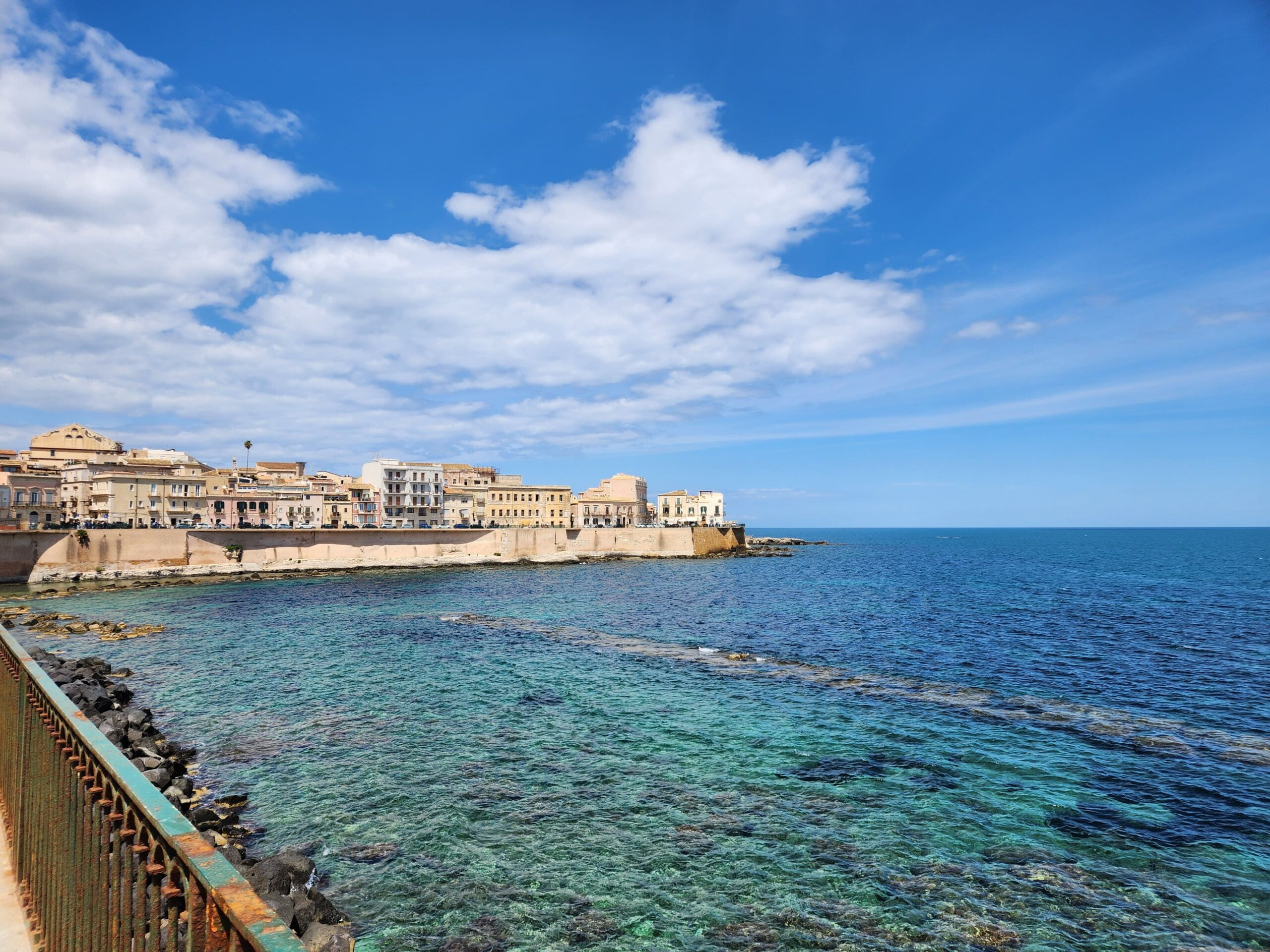
8. Neapolis Archaeological Park
Italian: Parco Archeologico della Neapolis

At this point, we are reaching the culmination of our trip to Syracuse by visiting one of the most important ancient Greek and Roman historical sites in Italy: Neapolis Archaeological Park. Located in the historic center of Syracuse’s mainland, it is just a 7-minute drive from Ortigia Island. You can park your car at a paid parking area in front of the Archaeological Park.
Neapolis was the ancient Greek and Roman city of Syracuse. The park encompasses some of the most significant archaeological remains from this historical period, reflecting the city’s importance as a major cultural and political center in the ancient world.
What to See at Neapolis Archaeological Park:
- The Greek Theatre: Built in the 5th century BC, this ancient theater is one of the best-preserved Greek theaters in Sicily. It originally seated up to 15,000 spectators and is renowned for its excellent acoustics. The theater is still used for performances today.
- The Roman Amphitheatre: Dating from the 3rd century AD, this is the largest amphitheater in Sicily. Used for gladiatorial games and other public spectacles, it is partly ruined but offers insight into Roman entertainment practices.
- The Ear of Dionysius: This man-made cave has an unusual shape resembling an ear. Named after the tyrant Dionysius I of Syracuse, who, according to legend, used it as a prison, the cave is known for its remarkable acoustics. It is believed that these acoustics were used to torture prisoners by making them think they were being overheard.
- The Latomia del Paradiso: A vast quarry used by the ancient Greeks, this site includes several large cave-like spaces where limestone was extracted. It also features the “Grotto of the Winds,” a natural cavern known for its impressive size and echoes.
For those fascinated by ancient Greek and Roman history, this is absolutely must-see historical attraction. If you plan to explore all the sites, allocate around an hour and a half. The best way to experience Neapolis is by joining a guided tour. It is advisable to book your tour in advance.
Opening Hours: 8:30 AM to 7:45 PM
Ticket Prices:
- Free for young people under 18
- 9.75 € for ages 18-25
- 16.50 € for standard tickets
9. Catacombs of San Giovanni
Italian: Catacomba di San Giovanni
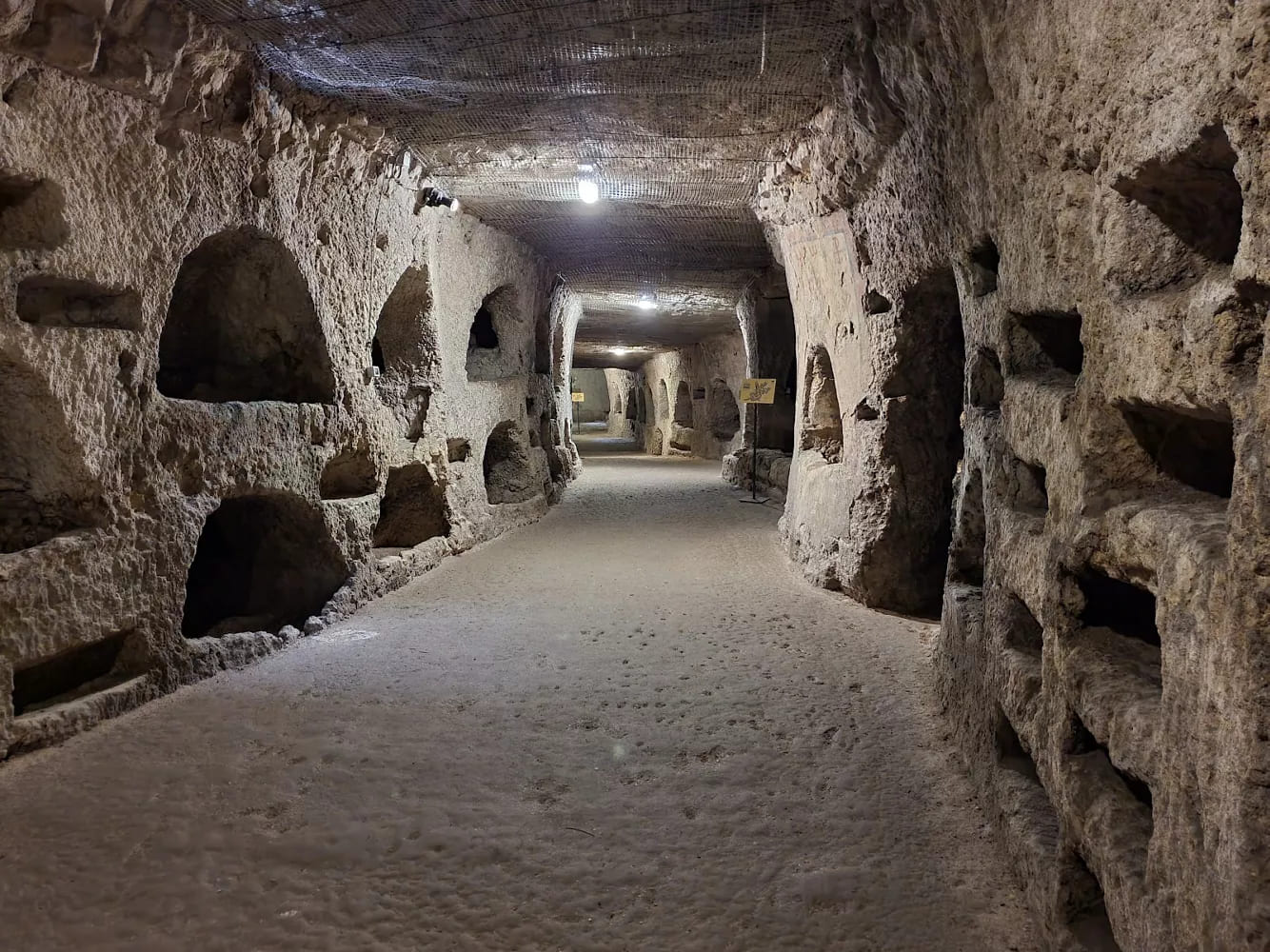
The Catacombs of San Giovanni are our pre-final stop. While this historical attraction may not be an absolute must-visit, it remains an important monument from the early Christian period in Italy. If you have the energy and interest, you might want to visit the Catacombs before heading to the Neapolis Archaeological Park, as admission here closes at 5 PM.
So, what is this historical site about?
The Catacombs of San Giovanni are an extensive network of underground tombs and burial chambers dating back to the early Christian period. They are among the largest and most impressive catacombs in Italy, offering a unique glimpse into early Christian burial practices.
The burial sites date from the 3rd to the 7th century AD. Carved into limestone, the catacombs feature burial niches, arched tombs, and early Christian frescoes depicting biblical scenes and symbols.
Notable areas of the site include the Crypt of the Bishops, which contains large tombs of early Christian leaders, early Christian frescoes, and the Baptistery.
If you plan to visit the Catacombs, note that the guided tour in English starts at 3 PM.
Opening Hours: 9:30 AM to 12:30 PM, 2:30 PM to 5:30 PM
Ticket Price:
- 10 € for standard tickets
- 7 € for children under 15
10. Dinner at Ammucca
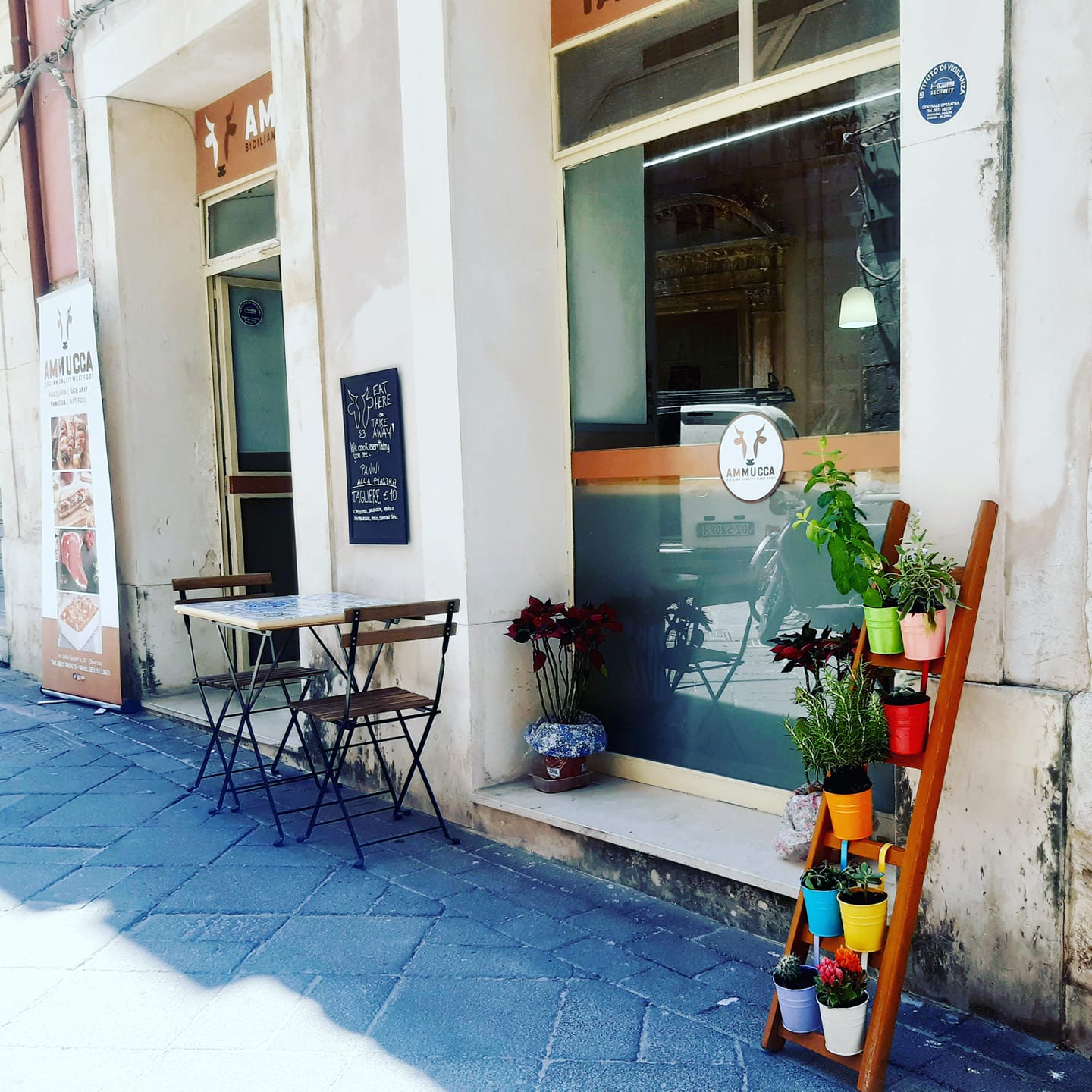
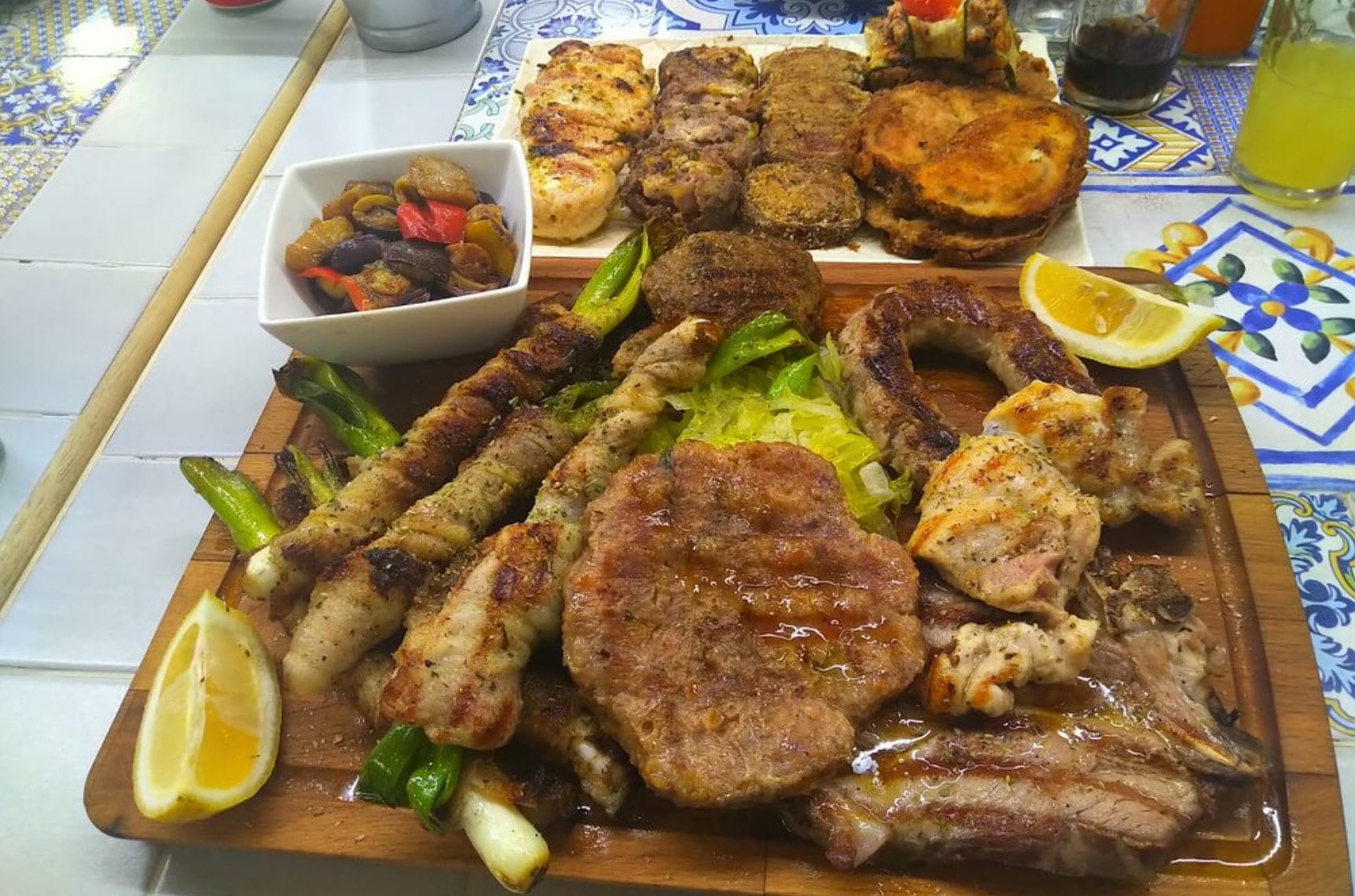
Here, you’ll find a selection of steaks, sausages, and cutlets that pair perfectly with grilled vegetables. You can also enjoy local red wines, such as Nero d’Avola, which complement the flavors of the meat.
Buon appetito!
Opening Hours: 8 AM – 2:30 PM, 5 PM to 9 PM
Average spend per person: 20-30 €
Transport and Moving Around
Syracuse is best reached from Catania:
- By Car: Approximately 50 minutes.
- By Bus from Catania Airport: Around 1 hour.
- By Train from Catania Central Railway Station: Approximately 1 hour
Summary
Don’t forget to check out our guide to the best things to do in Catania!
Ciao from Catania, fellow travelers! It has happened! We have finally reached Sicily, the southernmost part of Italy and the largest island in the country. This region boasts a rich history and culture, Baroque architecture, and fantastic beaches. It
